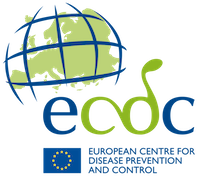Risk assessment guidelines for infectious diseases transmitted on aircraft
In the closed cabin environment of modern airplanes, passengers are frequently exposed to various infectious diseases. This report looks at 12 infectious diseases and, by systematically evaluating literature on on-board transmission, attempts to assess the risk of infection via air circulation in airplanes.
These guidelines are complemented by operational guidelines in relation to tuberculosis, new emerging airborne diseases (e.g. SARS) and meningococcal infections. They have been published as ECDC Guidance “Risk assessment guidelines for diseases transmitted on aircraft. Part 2: Operational guidelines for assisting the evaluation of risk for transmission by disease”.
Executive Summary
What are the chances of contracting an infectious disease during a domestic or international flight? Will flying with a sick fellow passenger in an aisle seat three rows ahead invariably make one succumb to a massive infection? Do airborne diseases spread more quickly inside aircraft cabins, given the rather poor air quality inside the cabin with its limited air supply rate and low humidity?
Despite the conventional wisdom that the enclosed passenger cabin can act as an incubator for disease, most scientific reports tell a different story: airborne disease transmission parameters for a specific disease are not fundamentally different when travelling in an airplane, transmission dynamics are basically the same, and infection levels aboard aircraft are generally no higher than on the ground.
Nevertheless, there is still reason for vigilance. There are several documented cases of disease transmission on board aircraft, and when a public health risk is detected, contact tracing passengers who were exposed during a flight is an essential step towards containment.
The guiding principle behind RAGIDA (‘risk assessment guidelines for infectious diseases transmitted on aircraft’) was the development of algorithms to enable efficient disease control and prevention for a range of infectious diseases. For a total of 12 diseases, ranging from anthrax to SARS, the authors systematically reviewed and summarised the scientific literature and, if available, related air transportation guidelines. The RAGIDA authors then combined the evidence retrieved from the literature with expert knowledge. The resulting paper provides a host of viable options for decision makers, particularly when faced with the decision whether to contact trace air travellers and crew that were exposed to infectious diseases during a flight.




